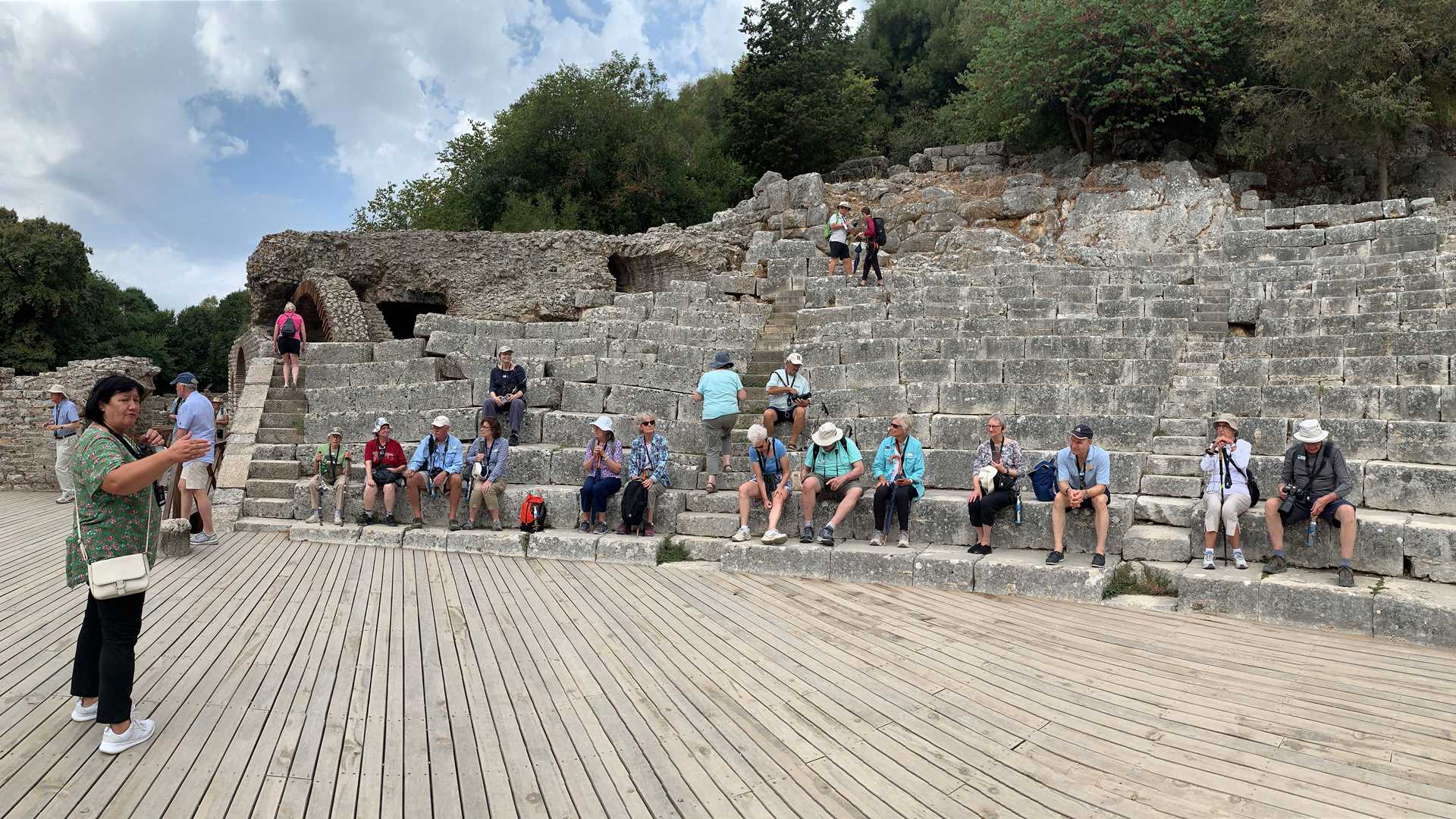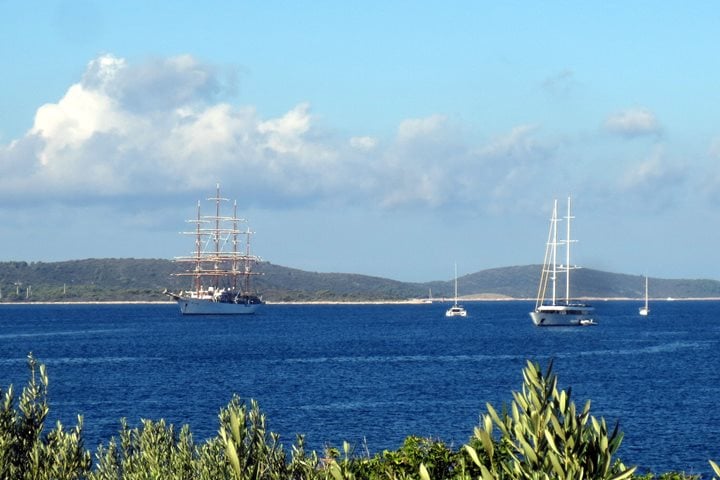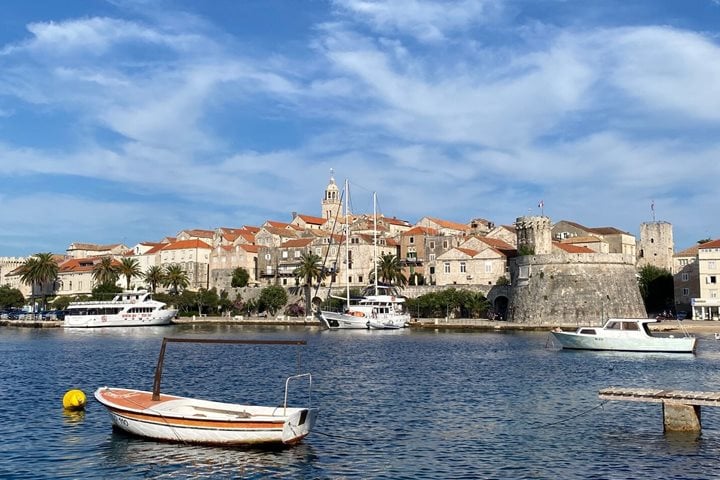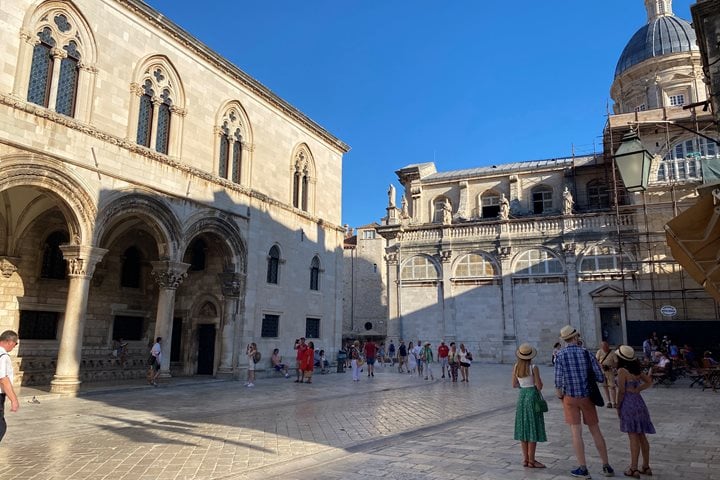A big cloud covers the city of Sarande, but only while we need it to keep us cool. We are literally the very first to arrive to Butrint. The gates open for our guests, just as they were unlocked exclusively to the Greeks in the 4th century BC. We walk into an archeological site that takes us 2,800 years back in time (or maybe more), through different episodes of Mediterranean history. We pass the impressive Hellenic walls built on gigantic angular limestone rocks that fit together without the use of mortar.
Butrint was known as “Troy in Miniature.” Virgil recounts Aeneas’s journey from Troy to Italy and his meeting with the Trojan exiles, Helenus and Andromache, who, according to legend, founded the city, even though Iliad Troy dates from the 13th century BC.
Throughout much of its ancient history, Butrint functioned as a religious center dedicated to Asclepius, the god of healing. One remarkable event to honor the god was the freeing of slaves, which was inscribed in stones found on the walls of the theater. The inscriptions record the names of the slave owners and give information on how they ruled the region.
It is important to remark that women in Butrint had more freedom than in the rest of classical Greece; in the event of the husband’s death, for example, any property passed to the wife, rather than to the eldest son.
In 228 B.C., Butrint fell under Roman rule. The area flourished with fountains, mosaics, and baths as people took advantage of the geographical position: a hill in between a lake and the Ionian Sea, with pristine water everywhere. Most of the mosaics must remain covered today to protect them from the elements, but we do get to view the beautiful heart mosaics of the Great Basilica, built during the early Christian periods in the 6th century AD. We finish up the walk in the Venetian Tower, which later became an Ottoman fortress and has since become Butrint’s museum.
Before returning the the ship, we drive to Lekuris Castle to enjoy Albanian wine, mussels, and cheese with a magnificent view of Sarande Bay. Still no rain, only a protective cloud. With the threat of a storm, we sail north. Just as we are entering Porto Palermo Bay, the winds calm down, and the skies clear. We are able to make our landing at the beach and visit Ali Pasha’s Castle, sometimes known as the Muslim Bonaparte. The steps are lit up with candles, just for us. At the top of this 19th century castle, Vendim and ballerinas Paula, Cindy, and Vanessa welcome Lindblad guests with Albanian folk dance and music, until the sun sets behind the ancient hills of this generous land.







